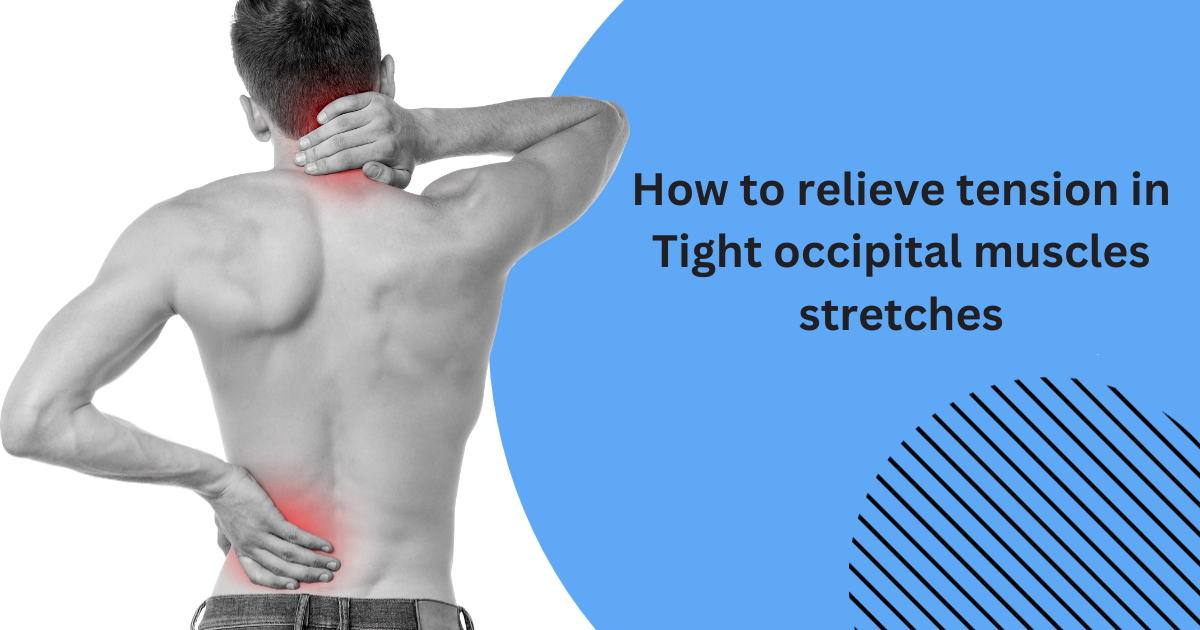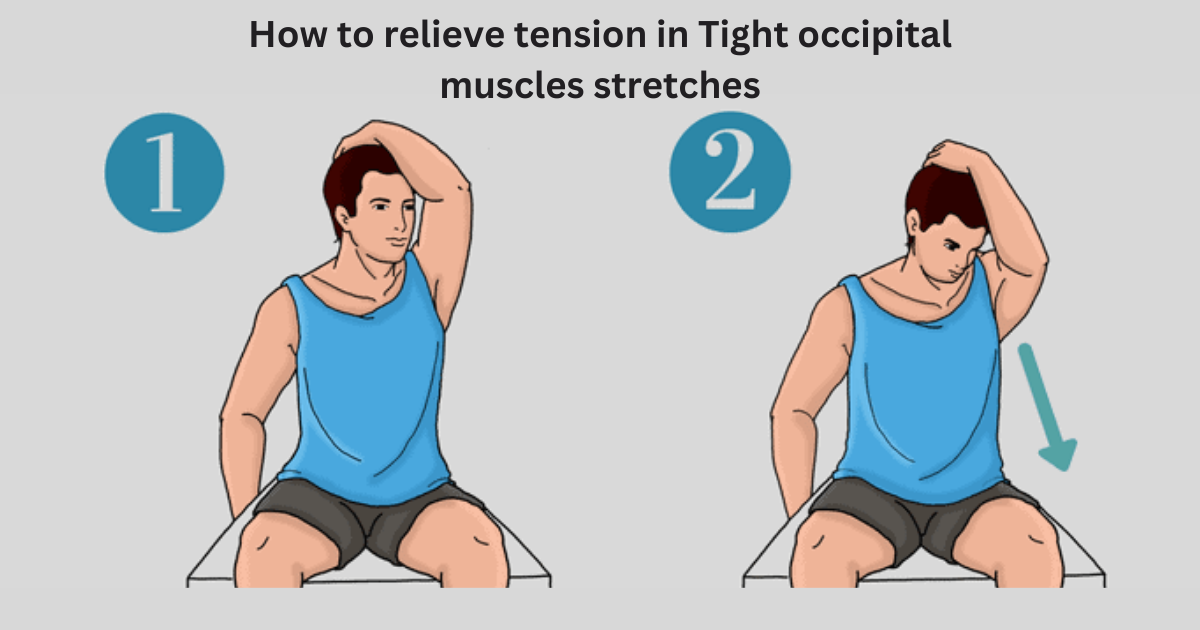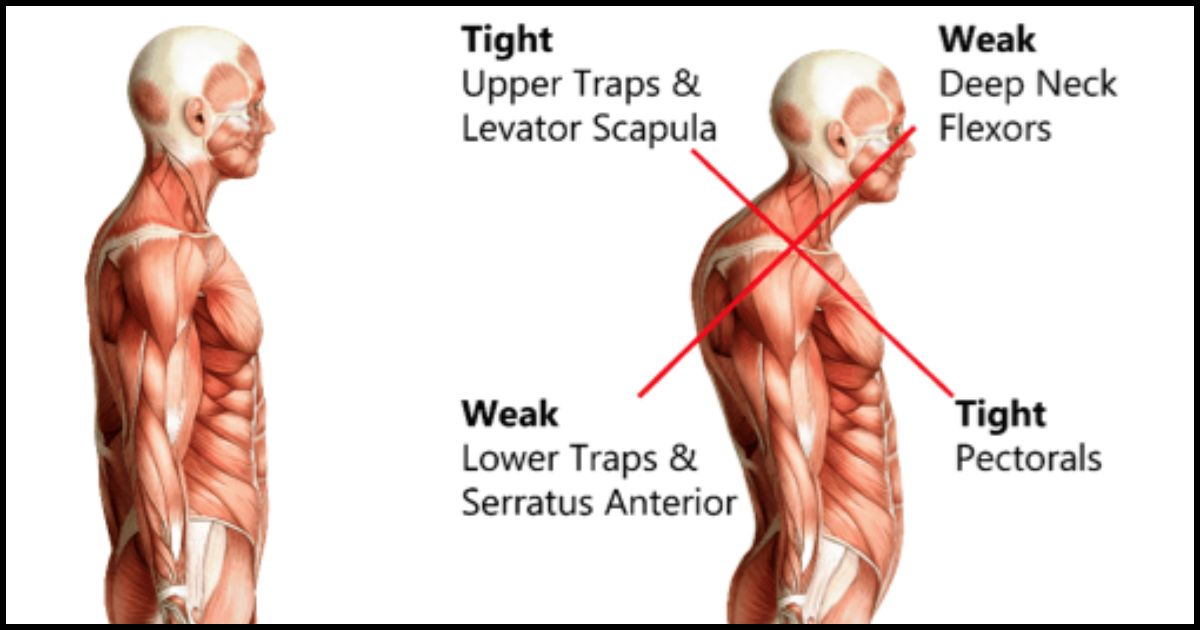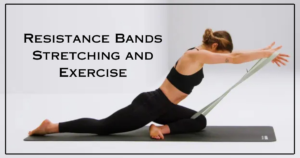The occipital muscles establish themselves at the base of the skull, where they support head movement, maintain neck flexibility, and improve posture through their location around the occipital bone. These muscles have a crucial role in human activity because they let us turn our heads, look upward or downward, and help keep us stable in both sitting and standing positions. Modern living habits, stress, insufficient posture, and repetitive body movements make occipital muscle strain more common, thus producing neck, upper back, and head discomfort.
The Tight occipital muscles stretch when they do since it causes headaches and neck pain and reduces movement abilities. Stretching exercises designed explicitly for such discomfort will relieve tension and enhance flexibility, relieving pain in the neck and head regions. This article examines the development of tight occipital muscles and the limitations of body function because of these muscles before presenting the necessary stretching techniques to reduce muscle tension.
Understanding the Tight occipital muscles stretches.
The base of the skull holds small occipital muscles, including the occipitalis, splenius capitis, and semispinalis capitis, while other cervical spine-connected muscles make up its total composition. The occipital muscles unite with the upper back and shoulder muscles to achieve head movements, including rotation and tilting in multiple directions. The occipital muscles solidify head and neck structures when we move our bodies daily.
Numerous causes result in tension within the occipital region until they trigger discomfort with pain or turn off muscular tightness. These are some key factors that result in occipital muscle tightness:
- Poor Posture: The occipital muscles experience more significant strain whenever people maintain improper postures, such as slouching and neck-forward positions while standing or sitting.
- Stress and Tension: The neck and shoulder muscles tend to tense up under stress or tension, creating trouble in the occipital area.
- Repetitive Movements: Constant screen observation combined with head tilting behavior during reading tasks and repetitive neck movements will eventually cause muscles to grow tired and stiff.
- Injury or Trauma: A local strain develops in occipital muscles after a person experiences whiplash, gets injured, or sustains sudden neck jerks.
- Sleeping Position: Propping the head at an abnormal angle during sleep, along with using faulty pillow designs, leads to neck muscle strain, which affects both the neck and occipital muscles.
Symptoms of Tight Occipital Muscles
The Tight occipital muscle stretches produce uncomfortable symptoms that spread from the neck to the head region and extend to the upper back area. Some common symptoms include:
- Occipital Headaches: Headaches begin at the back of the skull before extending toward both temple and eye positions. Muscle tension is named as the source for most occipital area-related conditions.
- Neck Stiffness: Muscle tightness at the base of the skull produces neck stiffness, which restricts the natural movements of the head in each direction.
- Tenderness or Soreness: The occipital muscle region responds to touch by becoming sensitive when a person touches or massages it.
- Dizziness or Nausea: The tightness of the occipital area disrupts balance, which causes dizziness and nausea.
- Pain in the Upper Back or Shoulders: Pain from these occipital muscle spasms sometimes extends to the upper back, shoulders, and arm region, reducing mobility and causing discomfort.
How to Relieve Tension in Tight Occipital Muscles Stretches
I performed exercises for tight occipital muscle stretches, which enable tension reduction and pain relief, together with better neck flexibility. Perform these stretches regularly to obtain relief while promoting relaxation and stopping the progression of future tension. The following stretches provide an efficient way to reduce tension in occipital muscles.
Chin Tucks
A chin tuck remains a basic stretching technique that specifically works to stretch the muscles located in the neck and occipital area. This stretch benefits posture by aligning the head and neck while relaxing the upper neck muscles.
How to perform the chin tuck:
- Maintain an upright back position while keeping your shoulder muscles easy.
- Lower your chin towards your chest while making a slight double chin appearance.
- Continue the position for 5 seconds before you let your head go.
- Repeat the chin tuck 10-15 times.
People should perform this stretch at any time to ease neck and occipital tension, which results from poor posture.
2. Neck Tilt Stretch
Through neck tilt stretches, you can reach and stretch the neck muscles located on the sides and the Tight occipital muscles, thereby reducing neck tightness and improving range of motion.
The neck tilt stretch procedure involves the following steps:
- Position your body straight, sitting or standing, while keeping your shoulders at ease.
- Bend your head to the side while directing your ear toward your shoulder.
- Gently increase your head depth into the stretch through hand pressure to achieve a more profound stretch.
- Keep stretching for 20-30 seconds before returning to the beginning position.
- Repeat on the other side.
- Perform 2-3 repetitions on each side.
3. Upper Trapezius Stretch
The upper trapezius muscles reside underneath the ear area, which creates tension that affects the occipital region. Both neck mobility and tension relief result from performing stretches for the trapezius muscles.
This stretch targets the upper trapezius through the following sequence:
- Maintain a position, either sitting or standing, with relaxed shoulders.
- Keep your shoulders relaxed, and tilt your head toward your shoulder while placing your ear against your body.
- You should use your other hand to progressively move your head toward your shoulder to increase the intensity of the stretch.
- The hold time should be between 20 and 30 seconds, with a subsequent switch to the opposite side.
- Perform 2-3 repetitions on each side.
4. Levator Scapulae Stretch
The levator scapulae muscle at the back of the neck is essential in causing tension in the occipital muscles. Performing this stretch helps relax the tightness in the shoulders while benefiting the levator scapulae muscle.

To perform the levator scapulae stretch, you should follow these steps:
- Position your body straight up while keeping your shoulders in a relaxed state.
- Look 45 degrees to one side while allowing your chin to reach your underarm area.
- Using your hand, place gentle pressure on your head to move towards your armpit.
- Each stretch should be held for up to 30 seconds with a subsequent switch to the other side.
- Repeat 2-3 times on each side.
5. Occipital Muscle Release with Self-Massage
Gentle self-massage, added to stretch exercises, can relieve occipital muscle tightness and reduce pain intensity. After positioning your fingertips on the base of your skull at the occipital muscle location, gently press down with pressure.
Valid techniques exist to release the occipital muscles by following this method:
- Posture up your body as you relax your head and neck area.
- Rest your fingertips at the bottom of your skull beneath the occipital bone.
- Apply delicate hand pressure to the muscle location while performing small circular movements for massage.
- Maintain massage for 2-3 minutes and progressively raise the force only when you feel comfortable.
6. Cervical Spine Rotation Stretch
This stretch guides the performer to stretch muscles on the sides and back of their neck as it increases the flexibility of the cervical spine. This stretch enables you to relax your occipital muscles.
Execute the following steps to do the cervical spine rotation stretch:
- Keep your spine straight in a relaxed standing or sitting position.
- Complete a side-to-side rotation of your head while you move your chin toward the shoulder.
- Exhibit the stance for 20-30 seconds before you return to the original position.
- Perform the stretch once more on the opposing side.
- Perform 2-3 repetitions on each side.
7. Child’s Pose with Neck Stretch
During a child’s pose, you can stretch your whole back area and neck muscles, especially the occipital muscles. This neck stretch provides tension relief and muscle relaxation benefits.
The following steps show you how to perform a child’s pose with neck stretch:
- Begin your position by kneeling while keeping your big toes touching each other with your knees spread apart.
- When stretching your arms forward on the floor, your hips should move toward your heels.
- When performing a child’s pose, you should lower your head toward the floor while experiencing a stretch that extends through your neck’s back region.
- Repeat the stretch for up to 1 minute while deep breathing will improve relaxation.

Conclusion
Muscles in the back of your head tighten up to become one of the significant pain sources that continues to impact your neck and shoulder region and your head. Adding specific stretching techniques into your workouts will help you solve muscle tension problems, promote flexibility, and decrease future pain occurrences. Daily performance of tight occipital muscle stretches leads to better posture, reduced headaches, and lessens the frequent tissue pain that often happens with tight occipital muscles.
Be attentive to your body signals while stretching, and refrain from doing it too intensely. People who experience ongoing pain combined with stiffness or discomfort need to ask for healthcare professional consultation or seek help from physical therapists to gain proper medical treatment.






